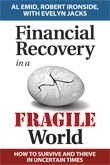Last updated: March 28 2012
The economy on the eve of the federal budget
When the federal government tables its 2012-2013 budget tomorrow, the emphasis will be on reduced spending and deficit reduction. And, by all indications, the feds may be in a good position to put the brakes on federal spending without bringing the recovery to a screeching halt.
ï Growth in real gross domestic product (GDP) has met expectations. According to Statistics Canada, real GDP rose 0.4% in the fourth quarter of 2011, after advancing 1% in the third quarter, with consumer spending and exports contributing the most to fourth-quarter growth. Economists are now pegging 2012 growth at 2.2% and 2013 growth at 2.4%-2.5%, which is pretty much in line with Bank of Canada expectations.
"The catalyst behind this positive adjustment,î wrote TD Bank economists in a recent report, "is an improvement in the near-term environment for the global economy and financial markets, which is expected to pay off in terms of higher world commodity prices, more robust exports and stronger confidence at home.î
ï Federal government revenues have steadily increased quarter after quarter with fourth-quarter 2011 revenue up 4.8% year over year, according to StatsCan's Government Finance Statistics. TD economics forecasts revenue of $244.5 billion in 2012 and $256.7 billion in 2013.
The upshot? Report TD economists: "Improved economic assumptions and lower than-anticipated spending numbers suggest that the federal government is enjoying a brighter fiscal outlook than just a few months ago ó the deficit is now estimated at $26 billion (1.5% of GDP) for fiscal 2011-12.î
That is a $5-billion improvement on the Bank of Canada's fall update.
ï Inflation is within the range the Bank of Canada has targeted, with the February consumer price index (CPI) advancing 0.4%, taking annual inflation to 2.6%, a slight edge upward from 2.5% last month. As has been the story lately, energy prices ó more specifically, gasoline prices ó and food prices pushed CPI higher.
Core inflation also rose 0.4% in February, boosting the underlying rate of inflation to 2.3% from 2.1% in January. Doug Porter, deputy chief economist at Bank of Montreal, notes core inflation is running a "bit hotterî than the 2.1% the Bank of Canada expected. But, he says in a recent report, "Even with some further upward pressure from gasoline prices in next month's reading, inflation should begin to recede in March thanks to some very favourable year‐ago comparisons for both headline and core.î
Adds Paul Ferley, assistant chief economist at Royal Bank of Canada, in a report: "With the Canadian economy continuing to operate with unused capacity, as evidenced by a still high unemployment rate, inflation is expected to drop back below 2% during the course of 2012. Under this scenario, the Bank of Canada can focus on sustaining the recovery.î
ï Interest rates are low ó the Bank of Canada overnight rate is 1% ó and are expected to stay that way until mid-2013. In the short to medium term, that should support Canada's housing market and consumer spending.
ï Unemployment is expected to hold around 7.5% this year, before easing to 7% in 2012, note TD economists. Although national employment growth has stalled over the past six months, economists expect the labour market to snap out of its recent lull. But prospects for job creation in 2012 are not great, with governments at all levels reducing payrolls and businesses able to meet increased export demand through higher productivity.
ï Consumer debt as a percentage of disposable income has breached the 150% barrier. Since much of this debt is real estate-related ó either mortgages or home equity lines of credit ó the spectre of a collapse in the housing market strikes fear in the hearts of economists and policymakers. Estimates of just how overvalued the Canadian housing market is range from 10%-15% to 25%. Throw in higher interest rates and many Canadian households will be stretched to the limit.
Yet, consumer spending is a mainstay of our economic growth ó and thus constitutes a potential, longer-term problem.


